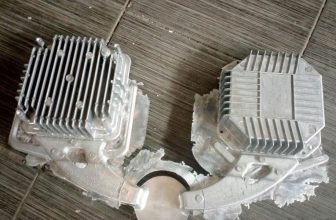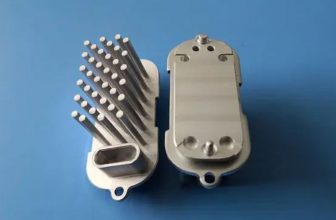LED lighting is nothing more than solving two problems, one is light and the other is heat. You see, the huge R&D department is nothing more than studying how to improve the brightness and uniformity of LEDs and reduce cooling costs. Therefore, it is very important to understand the light and heat distribution of LED chips to improve the quality and performance of LED lamps!
However, due to the lack of corresponding testing experience and equipment, neither the chip factory nor the packaging and lighting factory has done relevant testing on the light and heat distribution performance of the chip, resulting in a large number of chips with uneven light and heat distribution on the market, and these products have considerable Potential for performance enhancements such as large brightness enhancements and heat reductions. So how to purchase LED chips with high brightness and low heat? Jinjian offers the following suggestions:
1. The light and heat distribution of the LED chip must be uniform, and there is no phenomenon of overheating in the microscopic area.
Using the Jinjian microphotothermal distribution system, it was observed that the microscopic area of the chip is too dark and overheated. It is very likely that the current is crowded here, and too much electric energy is converted into thermal energy instead of light energy. The quantum efficiency is low, indicating that there is still room for improvement in the design of this chip.
2. Use the micro-photothermal distribution system to compare the brightness value and heat value of the chip at the operating temperature of the lamp.
The photothermal performance of the LED light source is greatly affected by the temperature. As the temperature rises, the brightness of the chip decreases and the calorific value increases. Therefore, the test results separated from the actual working temperature are less accurate and even meaningless.
3. It is recommended that chip manufacturers add light and heat distribution data at different operating temperatures to the LED specifications!
Control the quality from the source, and do a good job in the inspection of light and heat distribution, so that the LED can be the brightest, the temperature is the lowest, the cost is the lowest, and the quality is more reliable.
Why Do Incoming LED Chips Have To Be Tested For Light And Heat Distribution?
- At present, the most used horizontal structure chip on the market, the ohmic contact electrodes are on the same side of the chip, the current must be transmitted horizontally inevitably, and the current density will change with the distance between the electrodes, that is, where the positive and negative electrodes are close, The current density will be relatively large, so that the uneven current density has become an inherent technical bottleneck of horizontal structure LEDs.
- Many key technical issues related to LED chip manufacturing have not been fully resolved, especially the design of high-power LED chips, the selection of materials in the manufacturing process, and process parameters, which make the current density uniformity have a large room for optimization. Each chip (whether it is a horizontal structure or a vertical structure) will have a large difference in current density uniformity.
- The current aggregation effect inside the chip will lead to adverse phenomena such as the decrease of the power injection efficiency of the LED chip, uneven luminescence, and local heat concentration, which will affect the performance and reliability of the LED chip.
Through the photothermal distribution test, the problem of chip current density uniformity can be clearly observed, the chip quality can be more comprehensively evaluated, and the quality of each chip can be effectively identified.
The Current Density Uniformity Of Small-Sized Chips From Different Manufacturers Varies Greatly
The following is a comparison of the light and heat distribution of 11mil*30mil chips from different manufacturers. For such a small-sized chip, the path for the current to expand laterally in the chip is relatively short, and theoretically the current aggregation effect is relatively slight. However, there are differences in the process technology of different manufacturers, and there are still large differences in the uniformity of chip current density, and there are even differences in the temperature of chips from different manufacturers by tens of degrees! It can be seen from the comparison of the light and heat distribution of the following three chips of the same size:
- Chip A has the strongest luminescence, the least heat generation, and the most uniform light and heat distribution, indicating that this chip has good current density uniformity and high quantum efficiency. It is the first choice for high-end LED applications.
- Both chip B and chip C have weak luminescence and heat generation in the positive electrode area, and strong luminescence and heat generation in the negative electrode area. It is inferred that the two chips are caused by uneven distribution of light and heat caused by poor current expansion. These two chips have low quantum efficiency and local high temperature phenomena, and their performance and reliability are not as good as chip A.
- The high and low temperatures in the microscopic area of chips from different manufacturers can vary by tens of degrees!
By inspecting the light and heat distribution of incoming chips, it is possible to clearly judge whether the current density of the chip is uniform, whether there is local overheating, whether the brightness and temperature are higher or lower, and whether the product performance and reliability are better or worse, so as to conduct a comprehensive evaluation of the chip , to help customers choose the most suitable chip and provide strong data support.
Some Chips Are Hotter With The Positive Electrode, And Some Chips Are Hotter With The Negative Electrode!
The following is a comparison of the light and heat distribution of the 22mil*35mil size chips of the two manufacturers. For a high-power front-mount chip of this size, the lateral expansion path of the current in the chip is longer, resulting in a more obvious current aggregation effect. Therefore, it is necessary to have a reasonable electrode pattern design and good ohmic contact characteristics in order to make the injection current in the LED chip. uniformly distributed in the active layer. At present, many key technical issues related to the manufacture of high-power LED chips have yet to be resolved, and the ability of each chip manufacturer to solve problems varies, which makes the performance of different chips vary greatly! It can be seen from the comparison of the light and heat distribution of the following two chips of the same size:
- Compared with 11*30mil chips, the current density uniformity of this large-size high-power chip is relatively poor, which is also one of the technical bottlenecks in the development of high-power horizontal structure LED chips.
- Through a large number of tests, it is found that different types of chips have different temperatures for the positive and negative electrodes. Some chips have hotter positive electrodes, and some chips have hotter negative electrodes. The two chips are shown in the figure below. Overheating of the electrode will lead to melting of the electrode metal, deterioration of ohmic contact characteristics, and reduction of chip performance and reliability. Regarding the electrode heat, people don’t pay much attention, maybe the chip factory hasn’t done such detailed research.
- In this case, chip A has a strange phenomenon: the negative electrode is hotter, but the luminescence is not strong, while the positive electrode area is brighter, but the temperature is not high. This shows that the quantum efficiency near the negative electrode of this chip is low, where too much electric energy is converted into heat energy, and the ohmic contact reliability of the negative electrode is weak.
At present, most people pay attention to the overall performance of LED chips, such as brightness, junction temperature, and voltage. They pay too little attention to the distribution of light and heat, current density and other aspects of the chip, and failures often start from local weaknesses. It is strongly recommended that LED chips The light and heat distribution data at different operating temperatures are added to the specification! Doing a good job in the inspection of light and heat distribution can make the LED the brightest, the temperature the lowest, the cost the lowest, and the quality more reliable.








